A few days back Air India released a request for proposal (RFP) for their planned sale and leaseback of seven Boeing 787 aircraft. These are the first seven Dreamliners out of a planned order of 27 aircraft. The deal would also include “one or two spare” GE GEnx engines. Air India is currently requesting a 12 year lease deal from lessors in return for these 787s.
Sale and lease-back agreements allow cash-strapped airlines to raise funds by selling owned aircraft to lessors, and then leasing back those aircraft back on favorable terms. The money realised from selling the aircraft is used for more productive purposes by the airline.
With Air India suffering from a debt-load of more than Rs. 40,000 Crore, the additional cash would help them either pay down their debt, or at the very least fund their operations; an action for which Air India has already secured a Rs. 30,000 Crore loan for the next ten years.
Furthermore, this agreement will allow Air India to avoid incurring further aircraft related debt. IndiGo has made great use of sale-leaseback agreements on their fleet of Airbus A320 aircraft; the carrier made over Rs. 100 Crore from sale-leaseback transactions in 2012, and concurrently has managed to keep its debt level below that of its competitors.
Air India already has a confirmed contract with the United States Export-Import bank to finance these 27 aircraft at a sweetheart rate of 2.6%, but the airline has been hauled up by the Comptroller and Auditor General for excess debt, so it prefers the sale and lease-back deal, which will end up with at least 4%~4.5% debt servcing cost since it will be a private financing deal rather than government.
A sale and lease-back also brings immediate cash relief to an ailing airline, but at a higher future cost. The closest individual parallel is, taking a mortgage on your house to pay off old debt on previous houses. It is a dual edged sword. In the hands of a disciplined and stake-holding management sale and lease-backs are a powerful financial weapon allowing airlines to reduce high cost operations expense debt burdens, grow the operations and earn more to cover the higher long term costs of a private lease. However, at the mercy of an uninterested management, demoralised work-force and a government “run” airline with a history of constant interference, this will most likely be time-bomb that will explode and add to the financial misery of the Indian taxpayers whose money is being squandered to run the airline.
At first glance, it would seem that this sale and lease-back RFP represents a very lucrative opportunity for leasing companies: the Boeing 787 is a new and highly valuable asset that will be worth a lot of money for many years to come.
However, the very tenor of the lease gives one reason to pause. Most lease agreements are typically about six years in length. Why? one may ask. In a business, like aviation, which is so afflicted by external forces, 12 years is an eternity. It is next to impossible to predict with any significant confidence, what the market for the Boeing 787 will look like so many years later.
To give an example, in 1995, the Boeing 777-200 (non-ER) was considered as revolutionary an aircraft as the 787 is today. Six years later in 2001, competitor Airbus increased the weight carrying performance of its A330-300. Just six years after its entry into service (EIS), virtually overnight, Boeing lost the business justification for their 777-200.
Today, the Airbus has an order backlog of over 200 A330-300 aircraft, while Boeing has not received a single order for the 777-200 in the last four years. Can such a fate befall Air India and its 787-8 variant? Sure it can. Today the 777 is a segment leader in its class but in variants other than the -200. Similarly the 787-9 is expected to be more popular, as could be a potential -10 variant. The 787-8 could be rendered obsolete by a competing product from Airbus or a market that finds the operating economics of a 787-8 not as good as originally envisaged.
Over the course of these 12 years, Air India’s 787s are expected to lose more than 70% of their re-sale value. Even if the airline is able to lease out the airplanes at the end of the 12 years, the rates they would be able to get will be severely diminished. Air India should look at a lease tenor of five to six years. It will drastically increase the premium the airline can command.
In all probability Air India will not be able to command any sort of premium on these aircraft over its purchase price, and will receive less than 100% of what they paid. The most current list price of a Boeing 787-8 is US $195.3 million. In 2006, when Air India purchased these planes, the list price was $157.5 million. Airlines typically negotiate a discount of 25%~40% on list prices, but in the case of Air India, there is a offset agreement in place, so we have taken a value of 32.5% discount, which yields a purchase price of ~$106.3 million.
If we assume that the lessors will offer roughly 80-90% of this (taking into account the long tenor of the deal and Air India’s shaky credit), the resultant lessor purchase range is US $85.1~95.7 million. For seven aircraft, the total value of the deal becomes US $595.7-669.9 million, which is equivalent to roughly Rs. 3,100~3,500 crore at current exchange rates. While this value is significant to be sure, Rs. 3,500 crore would represent just 41.9% of Air India’s projected FY 2011 loss of Rs. 8,348.8 Crore (US $1.6 billion converted to current rupee valuation).
How much will the 787s cost to operate with the new deal?
Lease rates for aircraft tend to fluctuate around 0.7-1% of purchase value depending on the credit of the airline. While the Indian government has shown nothing but support (in terms of financing its operations) for Air India, Indian politics are noticeably mercurial; the mindset of the Indian aviation ministry can change in a hurry. Thus for lessors looking to ensure the reliability of the Air India 787 lease deal as an asset (future lease obligations are typically accounted for as assets), the lease rates will likely be in the higher end of the range we quoted above. For the sake of an analysis, if we assume that Air India is able to secure lease rates at 0.9% of purchase price, under the terms we outlined above, their monthly lease rate would range from US $851,000 to US $957,000.
In terms of operating costs, where finance/lease charges typically represent around 15% of trip costs for Indian carriers on long haul operations, the lease deals might actually decrease direct operating costs. However, this cost reduction is a mirage, as Air India will have accrued a heavy loss in selling the 787s off for less than purchase price. Still, the 787’s will likely be 10-15% more cost-efficient on a per seat basis than the 777s in Air India’s fleet, allowing the carrier to lose less money than ever before!
As part of the RFP we reviewed, Air India included the following characteristics for their 787:
- Aircraft will be configured with 256 seats (18J/238Y)
- 9 abreast in economy (3-3-3), 6 abreast in business (2-2-2)
- Business class seat pitch = 74 inches (lie-flat), economy class seat pitch = 33 inches
- 3 crew seats
- Business class seats are Contour Aura, while economy class are Weber 5751. The same slimline uncomfortable seats in Delta.
- Inflight entertainment will be Thales i8000 Top Series
- 9 toilets on board (2J/7Y), 9 galleys
Air India has elected to configure these aircraft with relatively few premium seats, a smart move given the competitive realities of the Indian market. The economy class seats are liable to be uncomfortable though; 9 abreast in a 787-8 is akin to 10-abreast in a Boeing 777; not a enjoyable experience at all.
Air India also noted the revised schedule for delivery of these 7 aircraft; delivery of the first airplane has been pushed back from December 2011.
The first seven aircrafts are expected to be delivered in January, March, April, May (2), and June (2) of 2012 as VT-ANA/ANB/ANC/AND/ANE/ANG/ANH, but there are doubts on this schedule as well due to FAA testing and certification issues at Boeing.
Ultimately, a sale-leaseback agreement will provide Air India with greatly needed cash on hand, while neatly side-stepping the issue of financing from the Export-Import bank of the United States which had driven a law suit from the Air Transport Association.
Sound economic logic shows that the long tenor of the deal will prevent Air India from maximising the economic value; but then a clause in the RFP demonstrates the lack of such logic in the thinking of the airline and its masters
AI [Air India] is not bound to accept the highest or any other offers received. The offers received may be accepted or rejected partially or in full without assigning any reason whatsoever.
 Bangalore Aviation News, Reviews, Analysis and opinions of Indian Aviation
Bangalore Aviation News, Reviews, Analysis and opinions of Indian Aviation
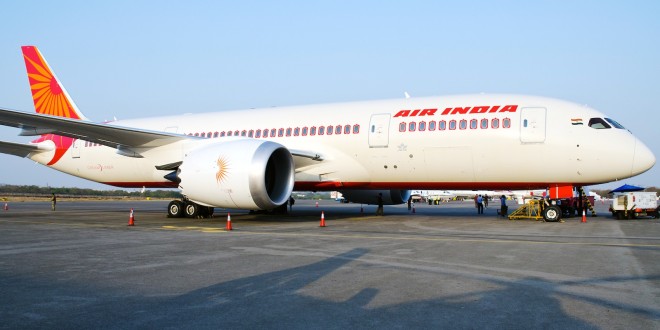
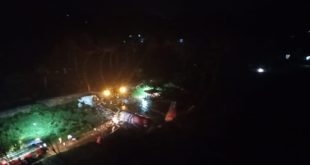
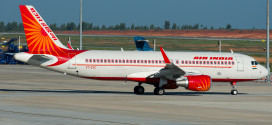
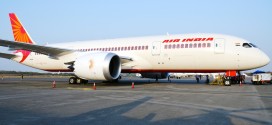
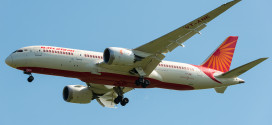
I work for an aircraft leasing firm and can tell you that 10 to 12 year lease tenors are standard for wide-body aircraft such as 777s and 787s. Only 1-2 airlines have so far been able to get 6 year terms, but the purchase prices were well below market in those instances.